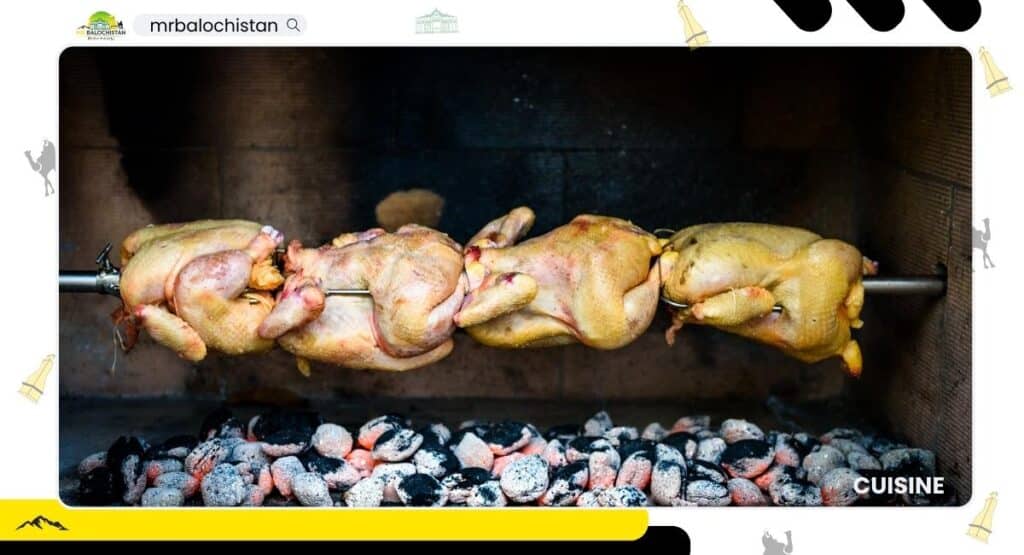Balochistan, a region that spans across three countries – Pakistan, Iran, and Afghanistan – is home to one of the most unique and vibrant cultures in the world. This culturally rich region is known for its ancient traditions, distinct art forms, and a strong sense of community. The culture of Balochistan, delves into its history, art, music, and the warm hospitality of its people.
Table of Contents
Historical Tapestry – Culture of Balochistan

The history of Balochistan is a tapestry woven with threads from different civilizations that have left their mark on the region over the centuries. The Baloch people themselves have a rich history dating back thousands of years, with roots tracing back to the Aryan migrations. They have maintained a distinct identity, even as the region saw influences from Persian, Indian, Arab, and Central Asian cultures.
culture of balochistan is deeply rooted in its nomadic and tribal heritage. The Baloch people have historically been pastoralists, relying on their herds of camels, goats, and sheep for sustenance. This nomadic lifestyle has shaped their culture, fostering a strong sense of independence, self-reliance, and resilience.
Art and Craftsmanship

The Baloch people are renowned for their craftsmanship, with a long tradition of creating exquisite handicrafts. One of the most iconic forms of Baloch art is their intricate embroidery, known as “Suzani.” Balochi embroidery features geometric patterns and vivid colors, often adorning clothing, accessories, and home decor items. This traditional art form is not only visually stunning but also a reflection of the rich cultural heritage of the region.
Another notable craft is the making of handwoven rugs and carpets. Balochistan is home to skilled artisans who create carpets with intricate designs, often inspired by nature and tribal motifs. These carpets are not just utilitarian; they are considered works of art that tell stories and preserve the culture’s history.
Music and Dance

Music and dance play an integral role in Baloch culture, providing a window into the soul of the people. The Balochi folk music is characterized by soulful melodies and poignant lyrics that often celebrate the joys and hardships of life in the desert. Traditional instruments like the “Suroz” (a stringed instrument) and the “Nar” (a flute-like instrument) are commonly used in Balochi music.
The “Attan” dance is a popular traditional dance form in Balochistan culture. It is a lively and rhythmic group dance that brings people together during festive occasions. Dancers perform in a circle, creating a captivating display of synchronized movements and footwork.
Hospitality and Cuisine – Balochistan Culture

Balochi hospitality is legendary. Guests are treated with warmth and respect, reflecting the strong sense of community in the region. Visitors to a Baloch household are often welcomed with a cup of “Qahwa” (traditional tea) and a plate of fresh dates. Meals are communal affairs, with families and friends gathering to enjoy a spread of traditional dishes.
When it comes to the Culture of Balochistan, the Baloch cuisine is a delightful fusion of flavors influenced by the region’s geography and culture. “Sajji,” a dish made from skewered lamb or chicken marinated with spices and cooked over an open flame, is a local favorite. “Dampukht,” a slow-cooked meat stew, and various types of bread, including “Roghan Naan” and “Sangri Naan,” are also staples of Balochi cuisine.
Challenges and Resilience

While Balochistan’s culture is a source of pride for its people, the region has faced numerous challenges over the years, including political conflicts, economic hardships, and natural disasters. Despite these challenges, the Baloch people have shown remarkable resilience, holding onto their traditions and way of life.
Pros and Cons of Culture of Balochistan
Balochistan Culture: Pros and Cons
strengths
Unique and vibrant culture
Rich historical tapestry
Distinct art forms and craftsmanship
Balochi embroidery and Suzani
Soulful Balochi folk music
Delicious Baloch cuisine
weaknesses
Historical conflicts and political challenges
Economic hardships and disparities
Limited access to resources for cultural growth
Non-availability of factory for cultural resources
Limited exposure to the global market
Limited varieties of international food
Conclusion
The culture of Balochistan is a treasure trove of history, art, music, and hospitality. It reflects the indomitable spirit of a people who have thrived in a challenging environment for centuries. As we explore the rich and diverse culture of Balochistan, we gain a deeper appreciation for the beauty and resilience of this remarkable region and its people.







